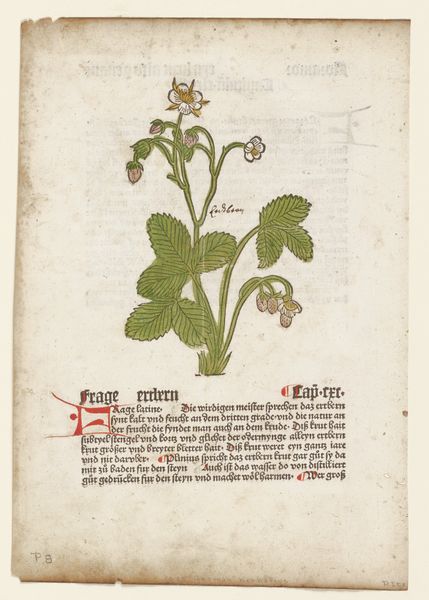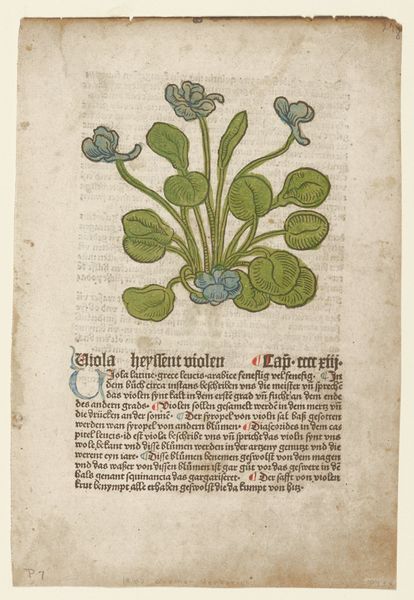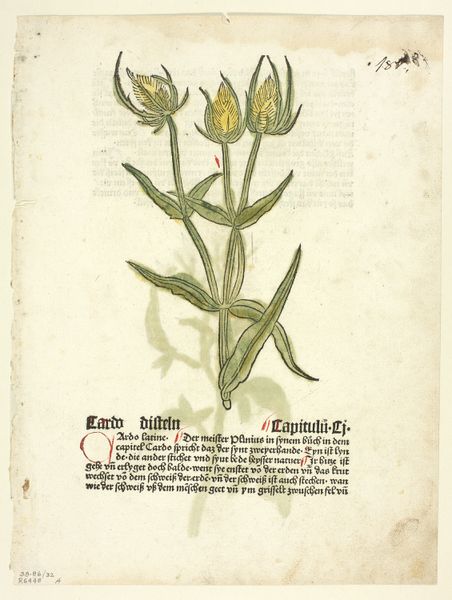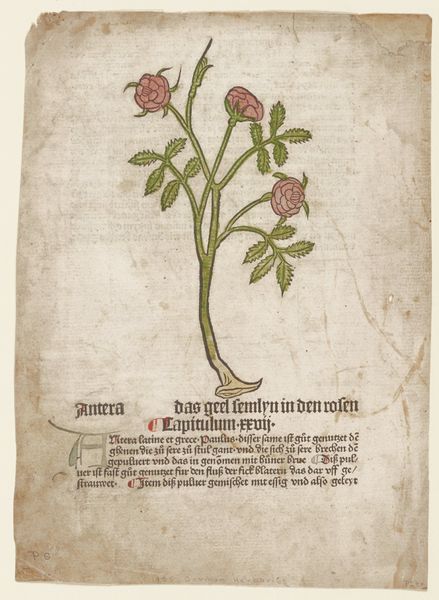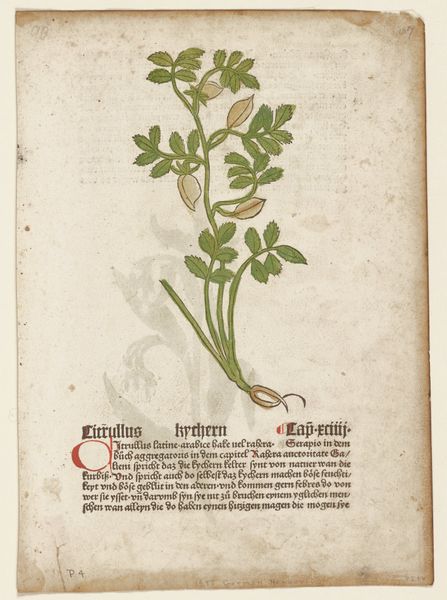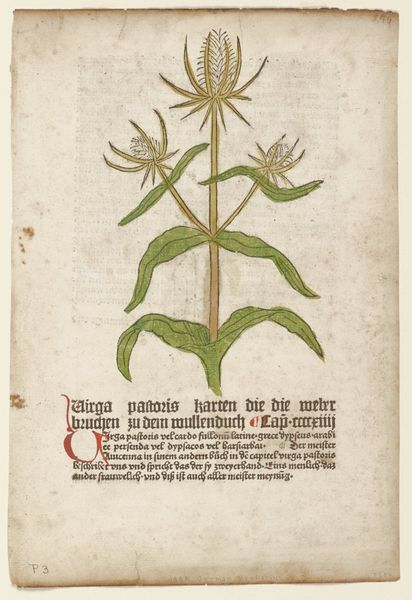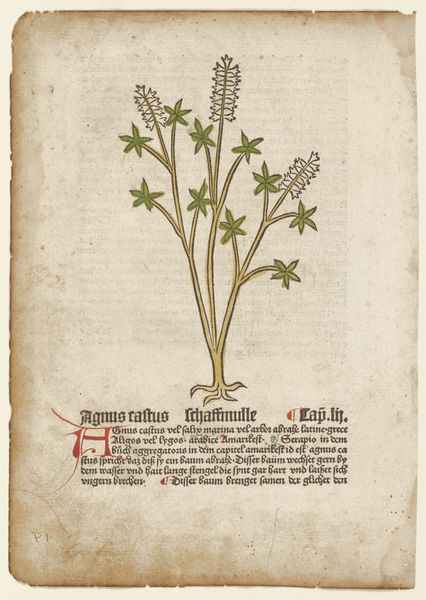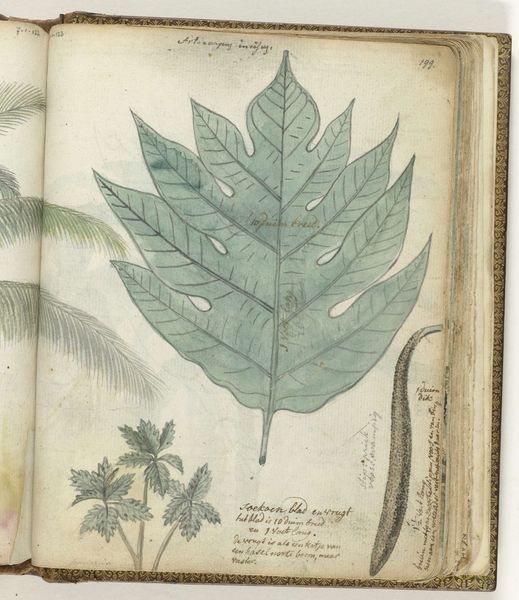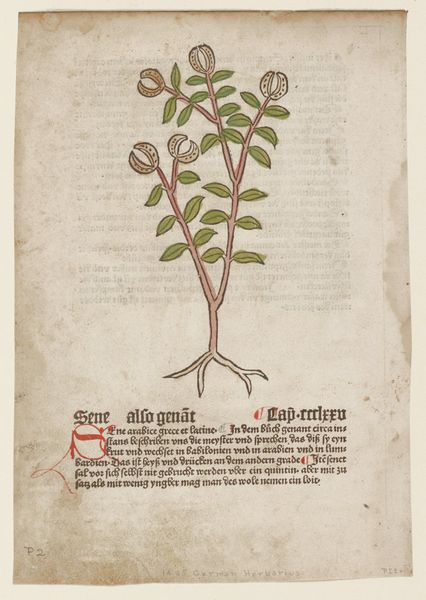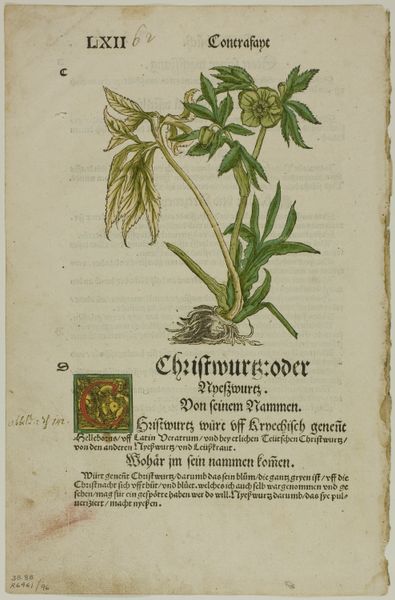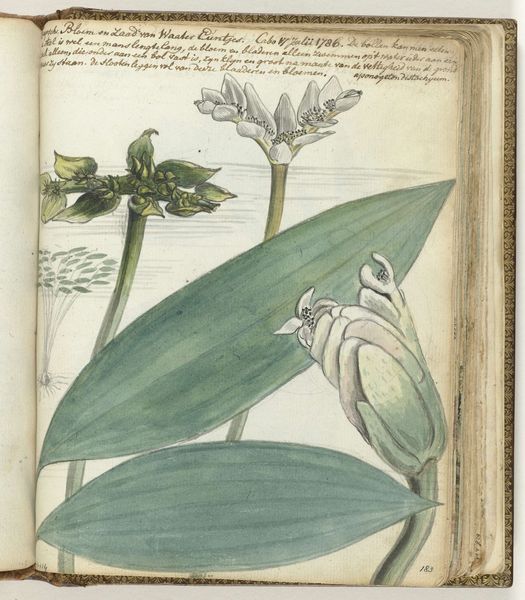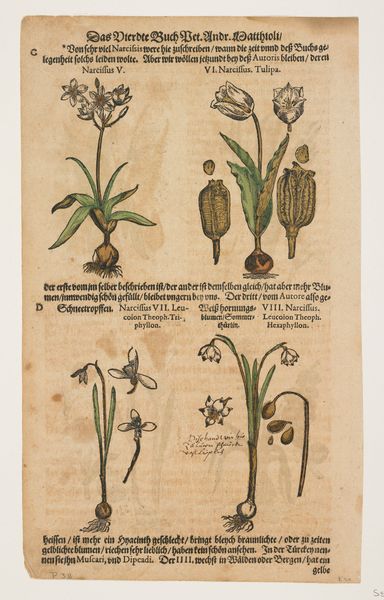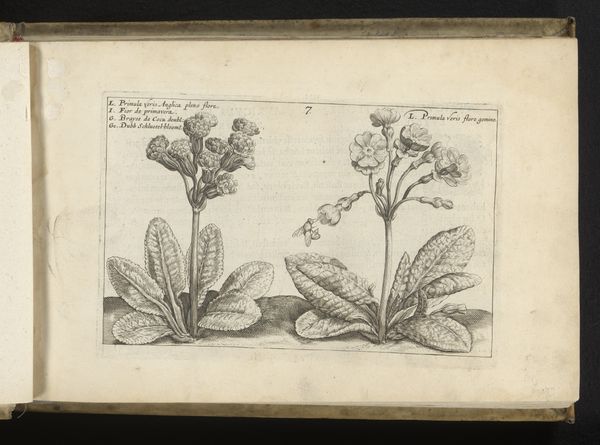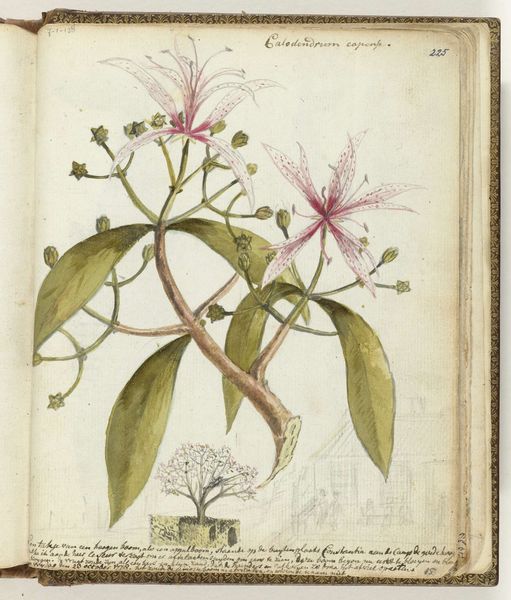
drawing, print, paper, woodcut
#
drawing
#
medieval
#
germany
#
narrative-art
# print
#
figuration
#
paper
#
folk-art
#
woodcut
#
line
#
northern-renaissance
Dimensions: 7 1/16 x 5 in. (17.94 x 12.7 cm) (image)
Copyright: Public Domain
This image of Camphora, or clover, was printed circa 1425-1502, by Johannes de Cuba. It’s made from ink on paper, using the era’s relatively new technology of the printing press. Look closely, and you’ll see the texture of the paper coming through the ink. The image is meticulously drawn, then transferred to a block – likely wood, but perhaps metal. The surrounding material would have been carefully carved away, leaving the lines in relief to receive the ink. This was a skilled process, demanding patience and control. The printing press allowed for the relatively quick reproduction of images and texts, making knowledge more accessible. But remember, this was still a handmade process at every step. The labor of the artist, the block cutter, and the printer are all present in the final result. The image’s existence speaks to both the democratizing potential, and the enduring human element, of early printmaking.
Comments
No comments
Be the first to comment and join the conversation on the ultimate creative platform.
